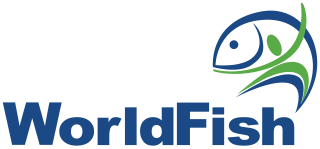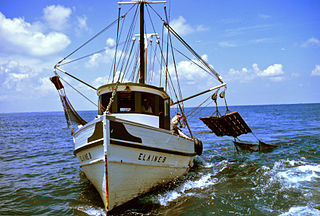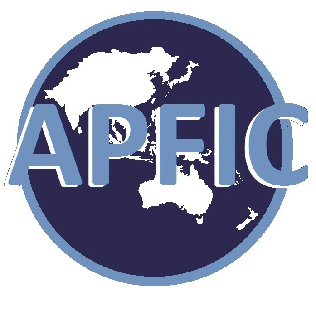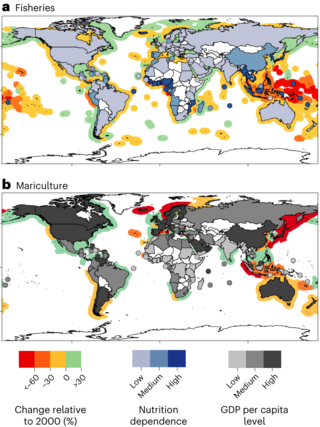| Producer | ProQuest for the Aquatic Sciences and Fisheries Information System |
|---|---|
| History | 1970–present |
| Access | |
| Providers | ProQuest |
| Cost | Subscriptions |
| Coverage | |
| Disciplines | aquatic science |
| Record depth | Index & abstract |
| Geospatial coverage | Worldwide |
| Links | |
| Website | www |
Aquatic Sciences and Fisheries Abstracts is an abstracting and indexing service covering aquatic science and its subfields. It is maintained by the Food and Agriculture Organization (FAO) of the United Nations. It replaced the previous Current Bibliography for Aquatic Sciences and Fisheries (FAO) and Aquatic Biology Abstracts.

Aquaculture, also known as aquafarming, is the controlled cultivation ("farming") of aquatic organisms such as fish, crustaceans, mollusks, algae and other organisms of value such as aquatic plants. Aquaculture involves cultivating freshwater, brackish water and saltwater populations under controlled or semi-natural conditions, and can be contrasted with commercial fishing, which is the harvesting of wild fish. Aquaculture is also a practice used for restoring and rehabilitating marine and freshwater ecosystems. Mariculture, commonly known as marine farming, is aquaculture in seawater habitats and lagoons, as opposed to freshwater aquaculture. Pisciculture is a type of aquaculture that consists of fish farming to obtain fish products as food.

The Food and Agriculture Organization of the United Nations (FAO) is a specialized agency of the United Nations that leads international efforts to defeat hunger and improve nutrition and food security. Its Latin motto, fiat panis, translates to "let there be bread". It was founded on 16 October 1945.

International Center for Living Aquatic Resources Management (ICLARM), also known as WorldFish, is an international organization working to transform aquatic food systems to reduce hunger, malnutrition, and poverty.

Fishery can mean either the enterprise of raising or harvesting fish and other aquatic life or, more commonly, the site where such enterprise takes place. Commercial fisheries include wild fisheries and fish farms, both in freshwater waterbodies and the oceans. About 500 million people worldwide are economically dependent on fisheries. 171 million tonnes of fish were produced in 2016, but overfishing is an increasing problem, causing declines in some populations.

The fishing industry includes any industry or activity that takes, cultures, processes, preserves, stores, transports, markets or sells fish or fish products. It is defined by the Food and Agriculture Organization as including recreational, subsistence and commercial fishing, as well as the related harvesting, processing, and marketing sectors. The commercial activity is aimed at the delivery of fish and other seafood products for human consumption or as input factors in other industrial processes. The livelihood of over 500 million people in developing countries depends directly or indirectly on fisheries and aquaculture.

The goal of fisheries management is to produce sustainable biological, environmental and socioeconomic benefits from renewable aquatic resources. Wild fisheries are classified as renewable when the organisms of interest produce an annual biological surplus that with judicious management can be harvested without reducing future productivity. Fishery management employs activities that protect fishery resources so sustainable exploitation is possible, drawing on fisheries science and possibly including the precautionary principle.

Lobsters are widely fished around the world for their meat. They are often hard to catch in large numbers, but their large size can make them a profitable catch. Although the majority of the targeted species are tropical, the majority of the global catch is in temperate waters.

Artisanal fishing consists of various small-scale, low-technology, low-capital, fishing practices undertaken by individual fisherman. Many of these households are of coastal or island ethnic groups. These households make short fishing trips close to the shore. Their produce is usually not processed and is mainly for local consumption. Artisan fishing uses traditional fishing techniques such as rod and tackle, fishing arrows and harpoons, cast nets, and small traditional fishing boats. For that reason, socio-economic status of artisanal fishing community has become an interest of the authorities in recent years.
Agricultural Information Management Standards (AIMS) is a web site managed by the Food and Agriculture Organization of the United Nations (FAO) for accessing and discussing agricultural information management standards, tools and methodologies connecting information workers worldwide to build a global community of practice. Information management standards, tools and good practices can be found on AIMS:
The Fishery Resources Monitoring System (FIRMS) is a partnership of intergovernmental fisheries organizations that share information on the global monitoring and management of marine fishery resources.

The Asia-Pacific Fishery Commission (APFIC), originally called the Indo-Pacific Fisheries Council (IPFC) is a Food and Agriculture Organization (FAO) Article XIV Regional Fisheries Body which covers fisheries, aquaculture and related aquatic resource issues in the Asia-Pacific region. APFIC functions as a Regional Consultative Forum raising awareness amongst member countries, fisheries organizations and fisheries professionals in the Asia-Pacific region.
This page lists the world fisheries' production. The tonnage from capture and aquaculture is listed by country.

The global commercial production for human use of fish and other aquatic organisms occurs in two ways: they are either captured wild by commercial fishing or they are cultivated and harvested using aquacultural and farming techniques.

Crab fisheries are fisheries which capture or farm crabs. True crabs make up 20% of all crustaceans caught and farmed worldwide, with about 1.4 million tonnes being consumed annually. The horse crab, Portunus trituberculatus, accounts for one quarter of that total. Other important species include flower crabs, snow crabs (Chionoecetes), blue crabs, edible or brown crabs, Dungeness crab, and mud crabs, each of which provides more than 20,000 tonnes annually.
AGRIS is a global public domain database with more than 12 million structured bibliographical records on agricultural science and technology. It became operational in 1975 and the database was maintained by Coherence in Information for Agricultural Research for Development, and its content is provided by more than 150 participating institutions from 65 countries. The AGRIS Search system, allows scientists, researchers and students to perform sophisticated searches using keywords from the AGROVOC thesaurus, specific journal titles or names of countries, institutions, and authors.

Fisheries are affected by climate change in many ways: marine aquatic ecosystems are being affected by rising ocean temperatures, ocean acidification and ocean deoxygenation, while freshwater ecosystems are being impacted by changes in water temperature, water flow, and fish habitat loss. These effects vary in the context of each fishery. Climate change is modifying fish distributions and the productivity of marine and freshwater species. Climate change is expected to lead to significant changes in the availability and trade of fish products. The geopolitical and economic consequences will be significant, especially for the countries most dependent on the sector. The biggest decreases in maximum catch potential can be expected in the tropics, mostly in the South Pacific regions.
AGORA is the acronym for the Access to Global Online Research on Agriculture program. It was launched in 2003 by the Food and Agriculture Organization of the United Nations (FAO) in partnership with Cornell University and up to 70 of the world's leading science publishers, to provide free or low-price online access to leading peer-reviewed publications in agriculture and related biological, environmental and social sciences to more than 100 lower-income countries.
The Canadian Journal of Zoology is a peer-reviewed scientific journal that covers zoology. It was established in 1951 as the continuation of Canadian Journal of Research, Section D: Zoological Sciences, and is associated with the Canadian Society of Zoologists.
The David Lubin Memorial Library is the main library of the Food and Agriculture Organization of the United Nations (FAO). Its world-renowned collection consists of technical material related to food, nutrition, agriculture, forestry and fisheries, with emphasis on developing countries. The core of its historical collection is the library of the International Institute of Agriculture (IIA), whose assets were entrusted to FAO when the IIA was disbanded in 1946.